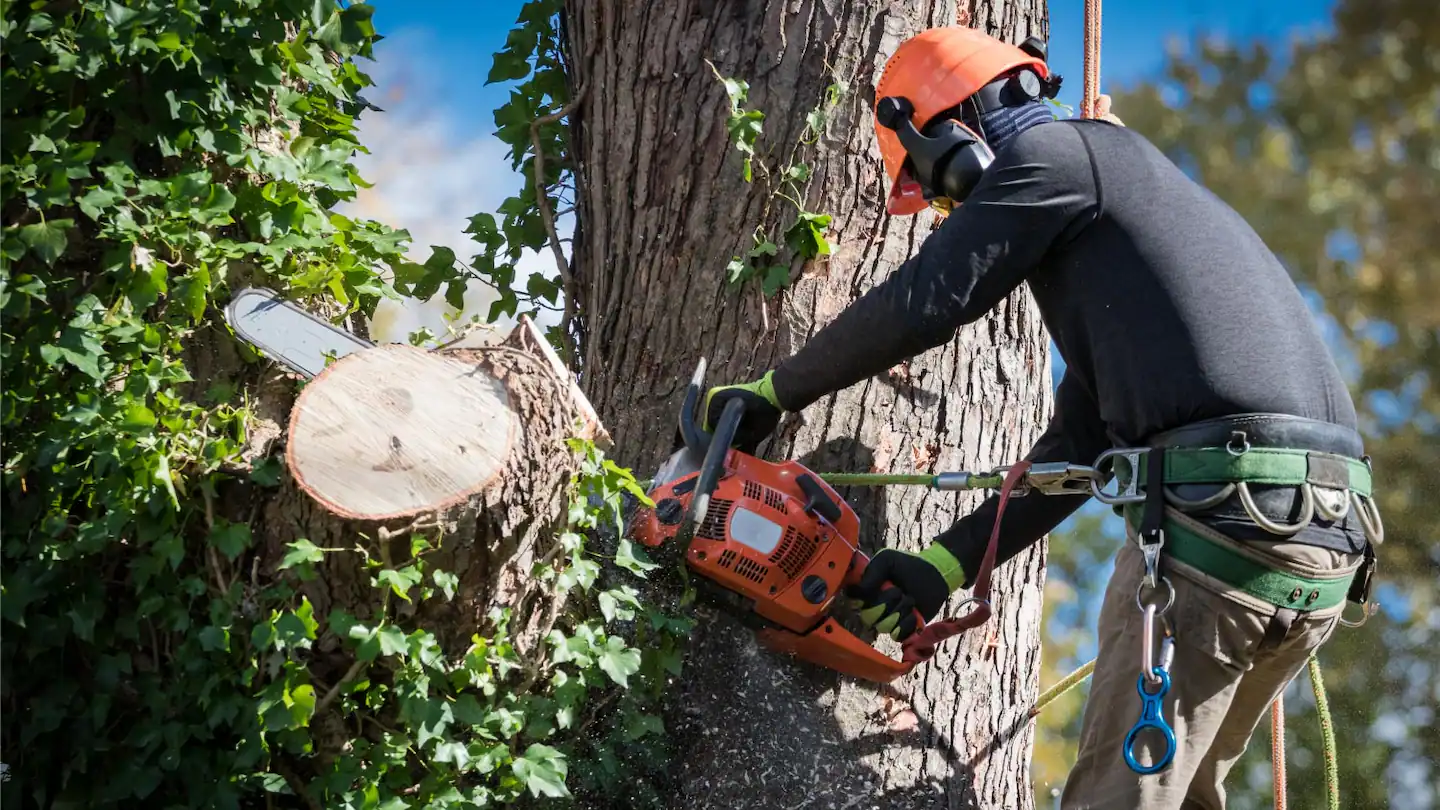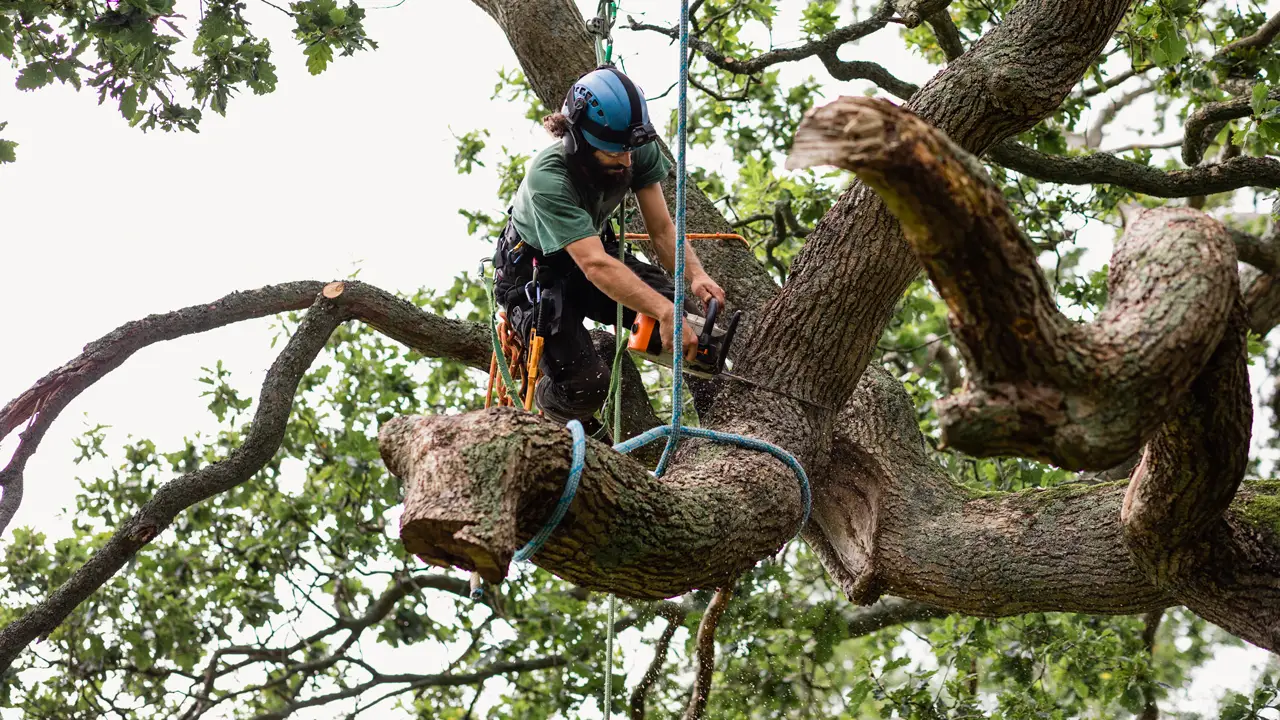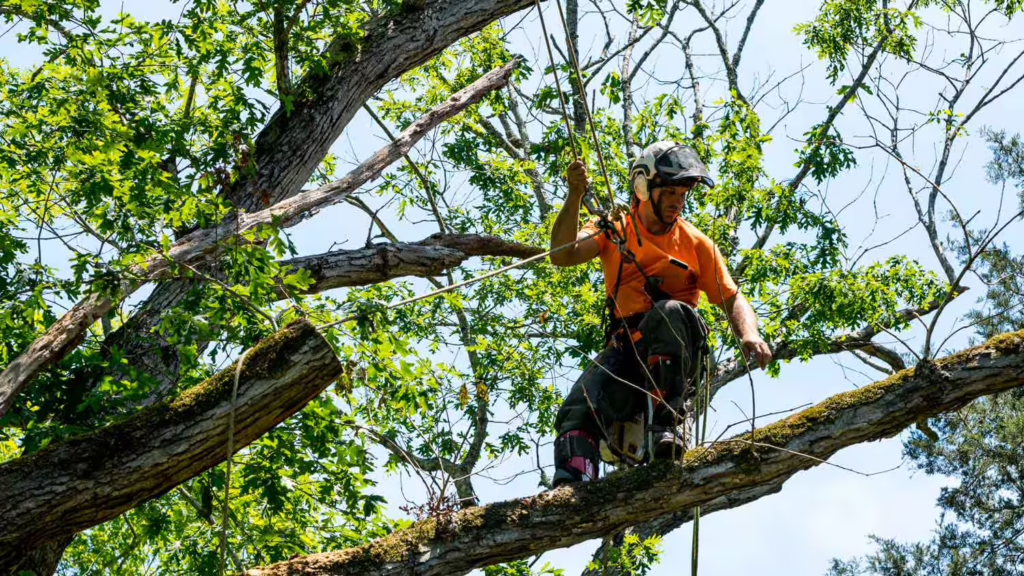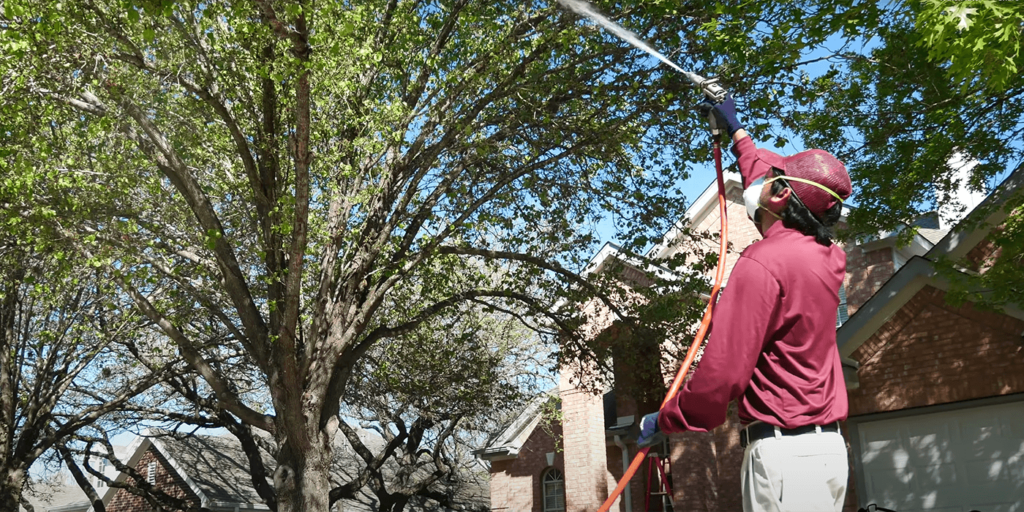If you have trees near your property, there may come a time when you need to consider tree removal. While trees provide shade and beauty, there are instances where tree removal becomes necessary. Whether it’s due to safety concerns, tree damage, or the need for construction, understanding the basics of tree removal will help you make informed decisions. In this guide, we will discuss the importance of tree removal, the risks involved, how to prepare for the process, steps for safe removal, hiring professional services, and dealing with tree stumps post-removal.
Understanding the Basics of Tree Removal
Many people wonder why tree removal is necessary. Trees, like any other living organism, have a lifespan. Over time, they can become weak, diseased, or encroaching on other structures. Removing trees in such cases becomes crucial to maintain safety and prevent further damage. However, tree removal is a complex process that should only be carried out by professionals. It involves assessing the tree’s condition, determining the necessary equipment, and adhering to safety measures to avoid accidents.
When choosing a tree removal service, consider their reputation, experience, and certifications. Look for companies that have positive reviews and are well-established tree removal near me. It’s important to ensure that the service provider is properly licensed, bonded, and insured. Requesting a detailed estimate and comparing prices from different companies will help you make an informed decision.
Why Tree Removal is Necessary
Tree removal is necessary for various reasons. Dead or dying trees pose a significant risk as they can fall and cause severe damage to property or injure individuals. Trees affected by diseases or pests can also spread the infection to surrounding trees, causing an infestation. Moreover, some trees may outgrow their space and interfere with power lines, building foundations, or other structures. Removing such trees ensures the safety and aesthetics of the area.
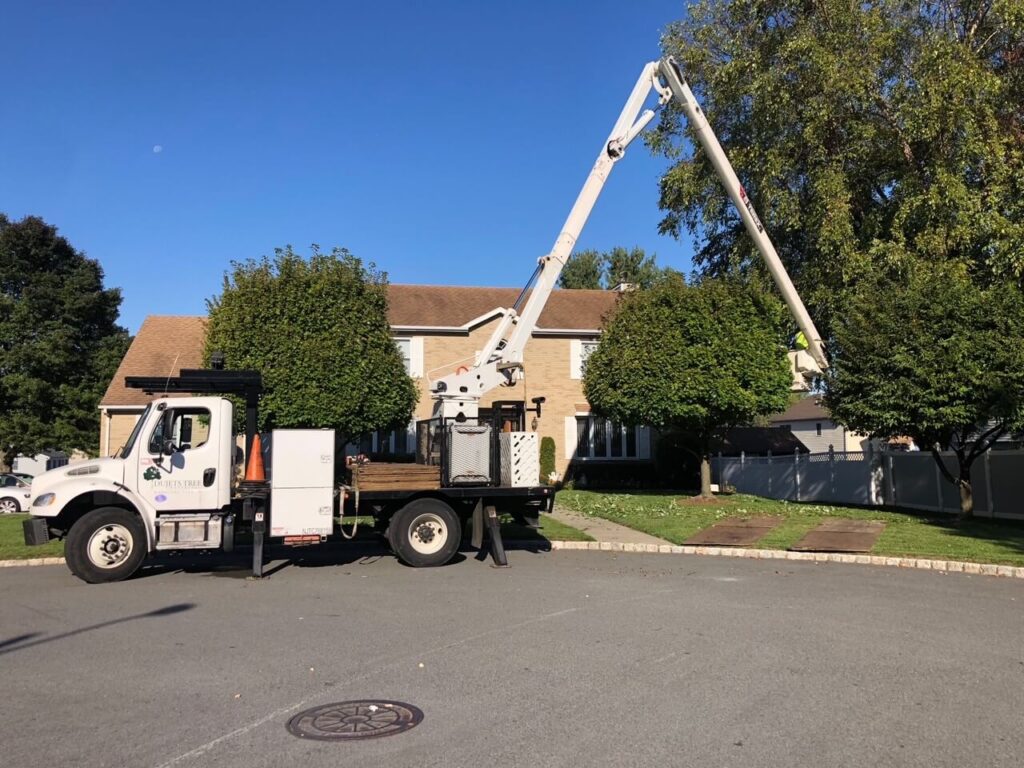
Risks Associated with Tree Removal
It’s important to be aware of the risks involved in tree removal. Accidents can occur if proper safety precautions are not taken. Falling branches or trees, faulty equipment, power line dangers, and lack of experience can lead to injuries or property damage. Therefore, it is crucial to hire professional tree removal services that have the expertise and safety protocols to manage these risks effectively.
When it comes to tree removal, it’s not just about cutting down a tree and calling it a day. There are several factors that professionals consider before starting the process. One of the first steps is assessing the tree’s health and stability. This involves examining the tree for signs of disease, decay, or structural issues that may make it prone to falling. Additionally, professionals also take into account the tree’s location and proximity to other structures or power lines.
Once the assessment is complete, the next step is determining the appropriate equipment for the job. Different trees may require different tools and machinery to ensure safe and efficient removal. This can range from chainsaws and wood chippers to cranes and aerial lifts for taller trees. Professionals have the knowledge and experience to select the right equipment based on the tree’s size, location, and surrounding environment.
During the tree removal process, safety is of utmost importance. Professionals follow strict safety protocols to minimize the risks associated with the task. This includes wearing protective gear such as helmets, gloves, and safety glasses. They also take precautions to prevent damage to surrounding structures or landscapes by carefully controlling the direction of the tree’s fall and using techniques like roping and rigging. Learn more about safety glasses at https://ehs.ncsu.edu/personal-protective-equipment-ppe/eye-and-face-protection-appendix-a/
In conclusion, tree removal is a necessary process to ensure safety and prevent further damage caused by diseased, dying, or encroaching trees. Hiring professional tree removal services is crucial to effectively manage the risks involved and ensure the job is done safely and efficiently. By understanding the basics of tree removal and the importance of professional expertise, you can make informed decisions when it comes to maintaining the safety and aesthetics of your property.
Preparing for Tree Removal
Before removing a tree, it’s essential to assess its condition carefully. Inspect the tree for any signs of decay, disease, or structural issues. Consider consulting an arborist who can analyze the tree’s health and provide recommendations. Additionally, identifying the necessary equipment for the removal process is crucial. Chainsaws, ropes, safety harnesses, and wood chippers may be needed to carry out the task efficiently and safely.
Tree removal is a significant decision that should not be taken lightly. It is important to consider the impact of removing a tree on the surrounding ecosystem and landscape. Trees provide oxygen, shade, and habitat for various wildlife. Before proceeding with removal, explore alternative options such as pruning, cabling, or bracing to preserve the tree’s health and structural integrity.
Assessing the Tree’s Condition
An arborist can assess the tree’s condition by inspecting the trunk, branches, and leaves. Signs of decay, hollow spaces, or cracks may indicate underlying issues. The arborist will also consider the tree’s location, leaning angle, and potential hazards. Based on the evaluation, they can determine if tree removal is necessary and recommend the best approach to ensure safety. Click here to learn more about potential hazards.
Furthermore, the assessment may include an evaluation of the tree’s root system. Compacted soil, root damage, or proximity to underground utilities can impact the tree’s stability and overall health. Understanding the root structure is crucial in determining the feasibility of tree removal and mitigating any potential risks during the process.
Necessary Equipment for Tree Removal
Tree removal requires specific tools and equipment. Chainsaws are commonly used to make precise cuts, while ropes and harnesses ensure controlled tree felling. Wood chippers can turn branches and stumps into mulch, simplifying the disposal process. Professional tree removal services have access to the necessary equipment and expertise to handle different situations effectively and safely.
In addition to the basic equipment, specialized gear such as cranes or aerial lifts may be necessary for removing large or hazardous trees. These tools enable arborists to safely navigate challenging tree removal scenarios, especially in urban or confined spaces. Prioritizing safety and precision, professionals utilize a combination of skills and equipment to execute tree removal with minimal impact on the surrounding environment.
Steps to Safely Remove a Tree
Removing a tree involves several crucial steps that ensure the safety of people, property, and the environment. By following safety measures and understanding the detailed process, tree removal can be done efficiently and without any complications.
Before proceeding with tree removal, it is important to assess the tree’s health and structure. A certified arborist can determine if the tree is diseased, unstable, or posing a risk to its surroundings. This evaluation will help in devising a safe and effective removal plan tailored to the tree’s specific characteristics.
Safety Measures to Consider
Prioritize safety when removing a tree by wearing appropriate protective gear such as helmets, goggles, and gloves. Clear the area around the tree to prevent accidents and secure the work area with barriers. It is essential to have a clear understanding of the surroundings, including structures, power lines, and other nearby trees. Adhering to safety protocols and using proper techniques will minimize risks throughout the process.
Furthermore, it is crucial to have a team of experienced professionals handle the tree removal process. Their expertise in handling different tree species and challenging scenarios ensures a smooth and safe operation from start to finish.
Detailed Process of Tree Cutting
The tree cutting process involves strategic planning to ensure a controlled fall and minimize damage. This process usually starts with pruning any dead or weak branches to reduce the risk of accidents during removal. Arborists make precise cuts near the trunk using chainsaws and guide the tree’s fall using ropes and pulleys. The tree is then cut into manageable sections and carefully transported away. The remaining stump can be removed through various methods, which we will discuss later in the article.
Additionally, after the tree is removed, it is important to consider options for recycling or repurposing the wood. Some trees can be salvaged for lumber or turned into mulch, reducing waste and benefiting the environment in a sustainable manner.
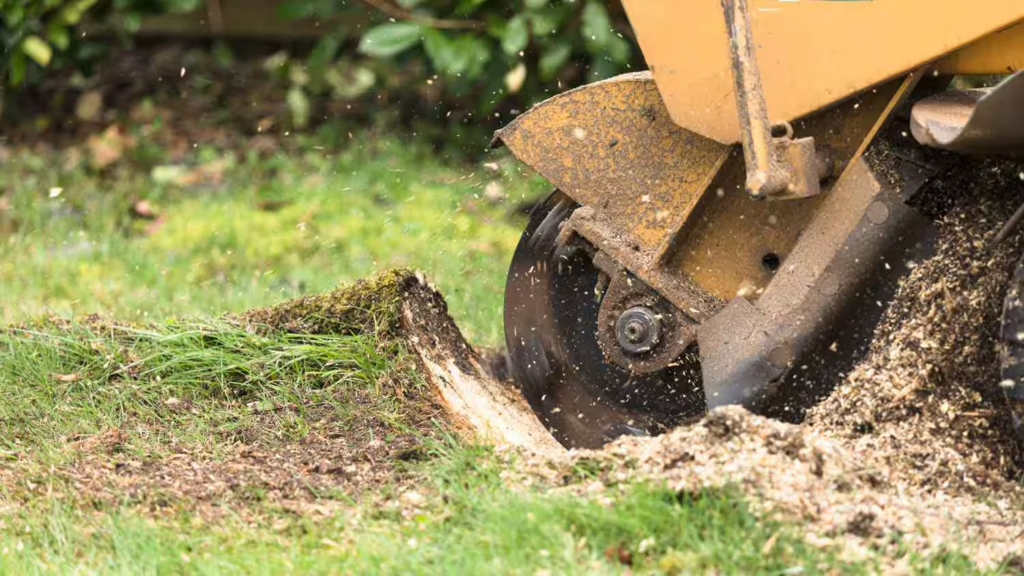
Hiring Professional Tree Removal Services
While DIY tree removal may seem tempting, it’s crucial to hire professionals for this task. Professional tree removal services have the necessary skills, experience, and equipment to remove trees safely and efficiently. By entrusting the job to experts, you can avoid potential risks and ensure the best possible outcome.
Removing trees is a complex task that requires careful planning and execution. Professional tree removal services follow industry best practices to ensure that trees are removed without causing damage to surrounding property or endangering individuals. They are equipped with specialized tools and safety gear to handle even the most challenging tree removal projects with precision and expertise.
Benefits of Hiring Professionals
Professional tree removal services have a deep understanding of tree biology, which allows them to assess the health of trees accurately. They can identify issues that may not be evident to an untrained eye, ensuring that trees are assessed properly before removal. Additionally, professionals have the expertise to handle heavy machinery and equipment, minimizing the risk of accidents.
Moreover, professional tree removal services prioritize safety above all else. They adhere to strict safety protocols to protect both their workers and your property during the tree removal process. By hiring professionals, you can have peace of mind knowing that the job will be completed safely and efficiently, without putting anyone at risk.
How to Choose the Right Tree Removal Service
Additionally, don’t hesitate to ask for references from past clients or inquire about the techniques and equipment the tree removal service uses. A reputable tree removal company will be transparent about their processes and be willing to address any concerns you may have. Remember, investing in professional tree removal services is not just about getting the job done – it’s about ensuring the safety of your property and the well-being of your trees.
Dealing with Tree Stumps Post-Removal
After a tree has been removed, the stump that remains can be an eyesore and a potential tripping hazard. There are several methods available for removing tree stumps, depending on your preferences and budget. By considering these methods and understanding the proper disposal of stumps, you can effectively deal with this post-removal aspect.
Methods for Tree Stump Removal
There are various methods for tree stump removal, including grinding, chemical stump removal, and manual extraction. Stump grinding is a popular method that involves using a grinder to break down the stump into wood chips. Chemical stump removal involves applying a stump removal product to accelerate decomposition. Manual extraction, on the other hand, requires digging around the stump and using tools to remove it entirely. The appropriate method will depend on factors such as the size of the stump and your desired outcome.
Disposal of Tree Stumps
Once a tree stump has been removed, proper disposal is important. Wood chips generated from stump grinding can be used as mulch in gardens or landscaping projects. If you opt for chemical stump removal, follow the manufacturer’s instructions for safe disposal of any leftover chemicals. It’s also worth considering recycling options, as some recycling centers may accept tree stumps for processing into usable wood products.
Taking the necessary safety measures, understanding the process, and hiring professional tree removal services will enable safe and efficient tree removal near you. By following the guidelines outlined in this ultimate guide, you can ensure the well-being of your property, the environment, and everyone involved throughout the tree removal process.
Other resources: Professional Tree Services Why They Are Crucial for Your Yard’s Health

